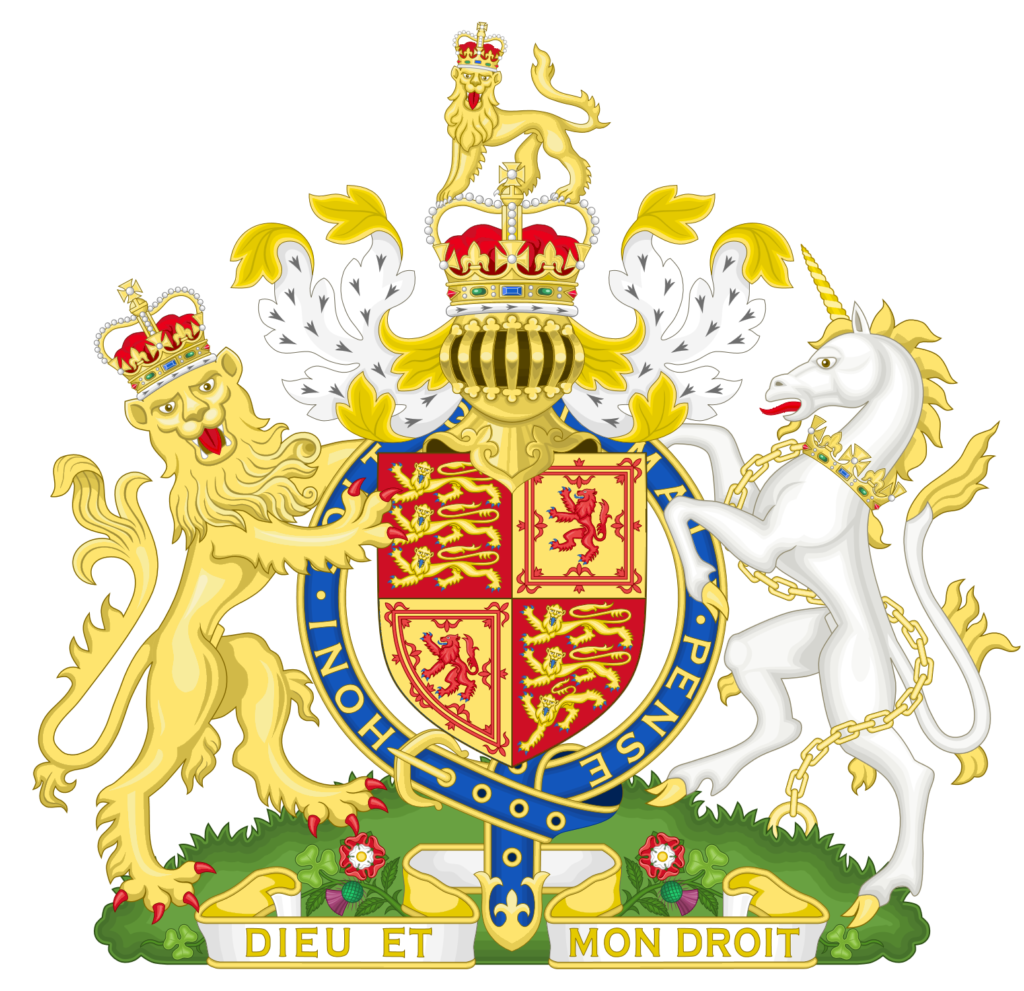orders of chivalry
The United Kingdom
The United Kingdom is a unitary parliamentary democracy and constitutional monarchy. The monarch, Queen Elizabeth II, has reigned since 1952. The capital is London, a global city and financial centre with an urban area population of 10.3 million. The United Kingdom consists of four countries: England, Scotland, Wales and Northern Ireland. Their capitals are London, Edinburgh, Cardiff and Belfast, respectively. Other than England, the constituent countries have their own devolved governments, each with varying powers.
The United Kingdom has historically played a leading role in developing parliamentary democracy and in advancing literature and science. At its zenith in the 19th century, the British Empire stretched over one-fourth of the earth’s surface. The first half of the 20th century saw the United Kingdom’s strength seriously depleted in two world wars and the Irish Republic’s withdrawal from the union. The second half witnessed the dismantling of the Empire and the United Kingdom rebuilding itself into a modern and prosperous European nation. As one of five permanent members of the United Nations Security Council and a founding member of the North Atlantic Ttreaty Organization and the Commonwealth of Nations, the United Kingdom pursues a global approach to foreign policy. The Scottish Parliament, the National Assembly for Wales, and the Northern Ireland Assembly were established in 1998.
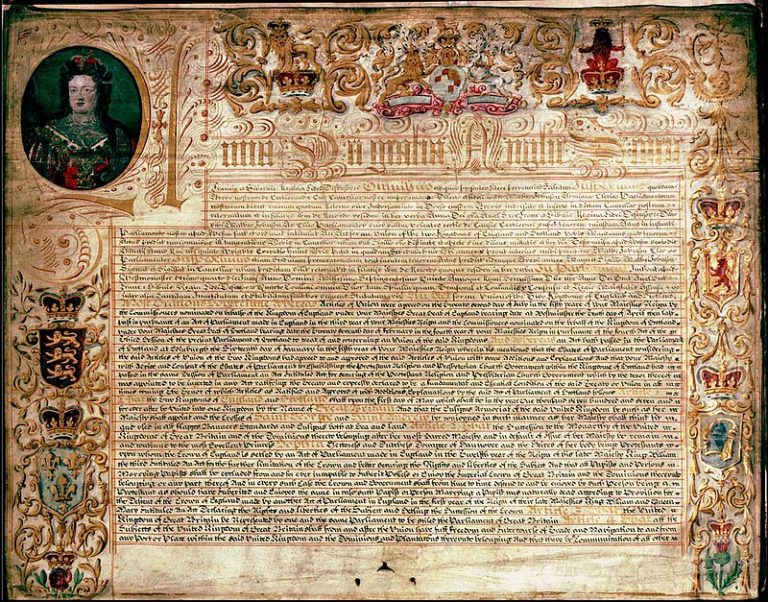
treaty of union between england and scotland
a brief history of the nation
England
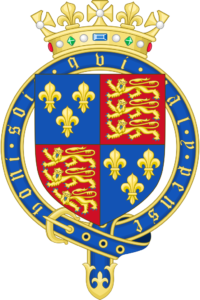
The Kingdom of England was a sovereign state on the island of Great Britain from July 12, 927, when it emerged from various Anglo-Saxon kingdoms, until May 1, 1707, when it united with Scotland to form the Kingdom of Great Britain. The Kingdom of England was among the most powerful states in Europe during the medieval period.
On July 12, 927, the various Anglo-Saxon kingdoms were united by Ethelstan (r. 927–939) to form the Kingdom of England. In 1016, the kingdom became part of the North Sea Empire of Cnut the Great, a personal union between England, Denmark, and Norway. The Norman conquest of England in 1066 led to the transfer of the English capital city and chief royal residence from the Anglo-Saxon one at Winchester to Westminster, and the City of London quickly established itself as England’s largest and principal commercial center.
Histories of the kingdom of England from the Norman conquest of 1066 conventionally distinguish periods named after successive ruling dynasties: Norman 1066–1154, Plantagenet 1154–1485, Tudor 1485–1603 and Stuart 1603–1707 (interrupted by the Interregnum of 1649–1660). Dynastically, all English monarchs after 1066 ultimately claim descent from the Normans; the distinction of the Plantagenets is merely conventional, beginning with Henry II (reigned 1154–1189) as from that time, the Angevin kings became “more English in nature”; the houses of Lancaster and York are both Plantagenet cadet branches, the Tudor dynasty claimed descent from Edward III via John Beaufort and James VI and I of the House of Stuart claimed descent from Henry VII via Margaret Tudor.
Following the conquest of England, the Normans gradually sought to extend their conquests both to the remainder of the British Isles and additional lands on the Continent, particularly in modern-day France. Over time, this would evolve into a long-standing policy of expansionism pursued intermittently with steadily increasing levels of aggression by successive English dynasties. Beginning in the 12th century, the Normans began making serious incursions into Ireland. The completion of the conquest of Wales by Edward I in 1284 put Wales under the control of the English crown, although Edward’s attempts to completely subjugate Ireland met with very limited success while the initial success of his conquest of Scotland was undone by English military defeat under his son, Edward II. Edward III (reigned 1327–1377) transformed the Kingdom of England into one of the most formidable military powers in Europe; his reign also saw vital developments in legislation and government—in particular the evolution of the English parliament. From the 1340s the kings of England also laid claim to the crown of France, but after the Hundred Years’ War the English lost all their land on the continent, except for Calais. The subsequent outbreak of the Wars of the Roses in 1455 would ensure the English were never again in a position to seriously pursue their French claims.
After the turmoil of the Wars of the Roses, the Tudor dynasty ruled during the English Renaissance and again extended English monarchical power beyond England proper, in particular achieving the full union of England and the Principality of Wales in 1542. The Tudors also secured English control of Ireland, although it would continue to be ruled as a separate kingdom in personal union with England for centuries. Henry VIII triggered the English Reformation by breaking communion between the Church of England and the Roman Catholic Church, although the doctrinal aspects of the Reformation which established the English Church as being recognizably Protestant would not be pursued in earnest until the brief reign of his young son Edward VI. Following a return to Catholicism under the similarly brief reign of Henry’s eldest daughter Mary I, Mary’s half-sister Elizabeth I (reigned 1558–1603) re-established Protestantism under the terms of the Elizabethan Religious Settlement, meanwhile establishing England as a great power and laying the foundations of the British Empire by claiming possessions in the New World. While Henry also pursued an aggressive foreign policy north of the border to subjugate Scotland, Elizabeth adopted a much more conciliatory position especially in light of developments such as Scotland’s own Reformation and the eventual certainty that the Scottish monarch would succeed Elizabeth.
From the accession of James VI and I in 1603, the Stuart dynasty ruled England and Ireland in personal union with Scotland. Under the Stuarts, the kingdom plunged into civil war, which culminated in the execution of Charles I in 1649. The monarchy returned in 1660, but the Civil War had established the precedent that an English monarch cannot govern without the consent of Parliament. This concept became legally established as part of the Glorious Revolution of 1688. From this time the kingdom of England, as well as its successor states the Kingdom of Great Britain and the United Kingdom, have functioned in effect as a constitutional monarchy. On May 1, 1707, under the terms of the Acts of Union 1707, the kingdoms of England and Scotland united to form the Kingdom of Great Britain.
The Acts of Union 1800 were parallel acts of the Parliament of Great Britain and the Parliament of Ireland which united the Kingdom of Great Britain and the Kingdom of Ireland to create the United Kingdom of Great Britain and Ireland. The acts came into force on January 1, 1801, and the merged Parliament of the United Kingdom had its first meeting on January 22, 1801. Most of Ireland seceded from the UK in 1922, leaving the present formulation of the United Kingdom of Great Britain and Northern Ireland, which formally adopted the name in 1927 to reflect the change.
wales
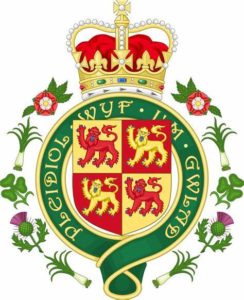
Wales was formed from the population in the western peninsula that was not subsumed by the rise of Anglo-Saxon culture and politics. Except for a few brief years in the 11th century, Wales was never a single independent kingdom. Instead, medieval Wales was a collection of different kingdoms, united by a common language, law, and sense of difference to the English. It was, however, divided by rival ambitions and territorial claims.
Those divisions made Wales vulnerable and, for the two centuries that followed the Norman conquest of England, Welsh territory was lost both to the English crown and to individual barons. In 1255 Llewellyn became king of Gwynedd. The Welsh kingdoms of Powys, Deheubarth, and Glamorgan recognized Llewellyn as their lord. In 1267 King Henry III of England made the Treaty of Montgomery with Llewellyn. According to the treaty Llewellyn was made Prince of Wales. However, he agreed to become the English king’s vassal Wales was conquered in 1283, after Edward I lost patience with Llewellyn, and declared him a rebel.
Edward was now ruler of Wales. English law was imposed upon the Welsh and Edward built a network of castles to control the people. Alongside the castles, Edward created new towns. In 1294 the Welsh rose in rebellion. However, the rebellion was crushed in 1295. Yet in 1301 to try and gain the loyalty of the Welsh, Edward made his son, who was also called Edward, Prince of Wales.
In the late 15th century towns and trade in Wales flourished. Much of the countryside also grew more prosperous. Then in 1485, Henry Tudor landed with an army at Milford Haven. He marched through Wales into England and after the battle of Bosworth, he became king.
In 1536 Henry VIII’s government enacted a measure that made important changes in the government of Wales. Whereas the The Statute of Rhuddlan had annexed Wales to the crown of England in 1284, the new act declared the king’s wish to incorporate Wales within the realm. One of its main effects was to secure “the shiring of the Marches,” bringing the numerous marcher lordships within a comprehensive system of counties. For the first time in its history Wales was to have uniformity in the administration of justice. Welshmen were to enjoy the same political status as Englishmen, and the common law of England, rather than Welsh law, was to be used in the courts. Wales also secured parliamentary representation by the election of members for shires and boroughs. The implementation of the act was set aside until more detailed provision was made by a second act in 1543. Statutory recognition was now given to the Council of Wales and the Marches, which exercised a jurisdiction over both Wales and four border counties of England.
scotland
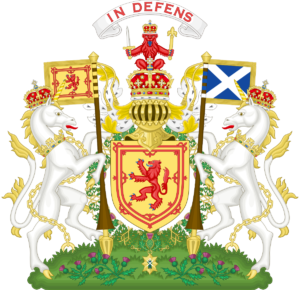
The Kingdom of Scotland was a sovereign state in northwest Europe traditionally said to have been founded in 843. Its territories expanded and shrank, but it came to occupy the northern third of the island of Great Britain, sharing a land border to the south with the Kingdom of England. It suffered many invasions by the English, but under Robert the Bruce it fought a successful War of Independence and remained an independent state throughout the late Middle Ages. Following the annexation of the Northern Isles from the Kingdom of Norway in 1472 and the final capture of the Royal Burgh of Berwick by the Kingdom of England in 1482, the territory of the Kingdom of Scotland corresponded to that of modern-day Scotland, bounded by the North Sea to the east, the Atlantic Ocean to the north and west, and the North Channel and Irish Sea to the southwest. In 1603, James VI of Scotland became King of England, joining Scotland with England in a personal union. In 1707, the two kingdoms were united to form the Kingdom of Great Britain under the terms of the Acts of Union.
Ireland
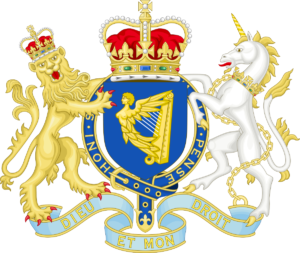
The Kingdom of Ireland was a client state of England and then of Great Britain that existed from 1542 until 1800 on the island of Ireland. It was ruled by the monarchs of England and then of Great Britain in personal union with their other realms. The kingdom was administered from Dublin Castle by a lord lieutenant) appointed by the monarch. Ireland had its own legislature, peerage, army, legal system, and the Protestant Church of Ireland.
The territory of the kingdom had formerly been a lordship ruled by the kings of England, founded in 1177 by King Henry II after the Anglo-Norman invasion of Ireland. By the 16th century, the area of English rule had shrunk greatly, and most of Ireland was held by Gaelic Irish chiefdoms. In 1542, King Henry VIII of England was made King of Ireland. The English began establishing control over the island, which sparked the Desmond Rebellions and the Nine Years’ War. It was completed in the 17th century. The conquest involved confiscating land from the native Irish and colonizing it with settlers from Britain.
In its early years, the kingdom had limited recognition, as no Catholic countries in Europe recognized Henry VIII and his successor, Edward VI, as kings of Ireland. Catholic Mary I was recognized as Queen of Ireland by Pope Paul IV. Catholics, who made up most of the population, were officially discriminated against in the kingdom, which was dominated by a Protestant Ascendancy from the late 17th century. This discrimination was one of the main drivers behind several conflicts which broke out: the Irish Confederate Wars (1641–53), the Williamite-Jacobite War (1689–91), the Armagh disturbances (1780s–90s) and the republican Irish Rebellion of 1798.
The Parliament of Ireland passed the Acts of Union 1800 by which it abolished itself and the kingdom. The act was also passed by the Parliament of Great Britain. It established the United Kingdom of Great Britain and Ireland on the first day of 1801 by uniting the Parliaments of Ireland and of Great Britain. Most of Ireland seceded from the United Kingdom in 1922, leaving the present formulation of the United Kingdom of Great Britain and Northern Ireland, which formally adopted the name in 1927 to reflect the change.
the commonwealth of nations
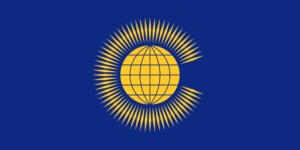
The Commonwealth of Nations, generally known simply as the Commonwealth, is a political association of 54 member states, almost all of which are former territories of the British Empire. The chief institutions of the organization are the Commonwealth Secretariat, which focuses on intergovernmental aspects, and the Commonwealth Foundation, which focuses on non-governmental relations between member states.
The Commonwealth dates back to the first half of the 20th century with the decolonization of the British Empire through increased self-governance of its territories. It was originally created as the British Commonwealth of Nations through the Balfour Declaration at the 1926 Imperial Conference, and formalized by the United Kingdom through the Statute of Westminster in 1931. The current Commonwealth of Nations was formally constituted by the London Declaration in 1949, which modernized the community and established the member states as “free and equal”.
The Head of the Commonwealth is currently King Charles III. The King is the head of state of 16 member states, known as the Commonwealth realms, while 33 other members are republics and 5 others have different monarchs.
Member states have no legal obligations to one another but are connected through their use of the English language and historical ties. Their stated shared values of democracy, human rights and the rule of law are enshrined in the Commonwealth Charter and promoted by the quadrennial Commonwealth Games.
The countries of the Commonwealth cover more than 11,566,870 sq mi), equivalent to 20 per cent of the world’s land area. The total population is estimated to be 2,418,964,000 as of 2016, equivalent to nearly a third of the global population, making it the second largest intergovernmental organization by population behind the United Nations.
King Charles III
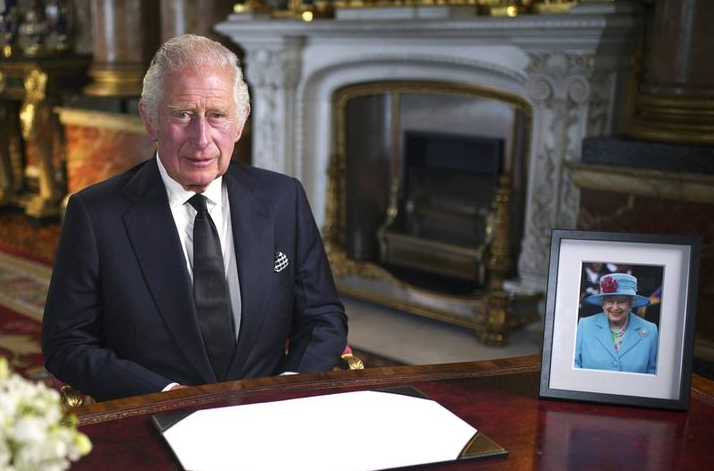
HIs majesty, King Charles III
His Majesty Charles III (Charles Philip Arthur George; born 14 November 1948) is King of the United Kingdom and 14 other Commonwealth realms. He ascended to the throne on September 8, 2022, upon the death of his mother, Queen Elizabeth II. He was the longest-serving heir apparent in British history and, at the age of 73, is the oldest person to assume the British throne.
His Majesty was born in Buckingham Palace on November 14, 1948, during the reign of his grandfather, King George VI. When Charles was three years old, his grandfather died and his mother ascended the throne, making him the heir apparent. Charles was created Prince of Wales in 1958, and his investiture was in 1969. He earned a Bachelor of Arts degree from the University of Cambridge and went on to serve in the Air Force and Navy from 1971 to 1976. In 1981, he married Lady Diana Spencer, with whom he had two sons, William, the Prince of Wales, and Harry. In 1996, the couple divorced. In 2005, His Majesty married his long-time partner, now the Queen-Consort, Camilla Parker Bowles.
His Majesty is a leading philanthropist. In addition to his trust, he has backed a huge array of charitable organizations, supporting efforts to improve educational services, fund arts initiatives, support sustainable business endeavors, provide employment opportunities to older citizens, and help the environment.
During an April 2018 summit of the Commonwealth, Queen Elizabeth nominated Charles to succeed her as head of the 53-nation association of Britain and its former colonies. Shortly afterward, Commonwealth leaders announced that they were adhering to the Queen’s wish.
the prime minister
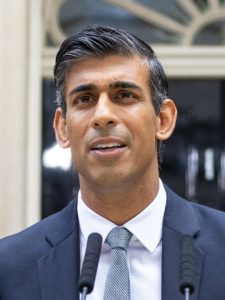
The right honorable Rishi Sunak, prime minister of the united kingdom
The Right Honorable Rishi Sunak was appointed as the 81st Prime Minister of the United Kingdom on 25 October 2022. Originally elected as the Conservative MP for Richmond (Yorks) in 2015, Prime Minister Truss held various cabinet offices under four prime ministers, serving most recently as chancellor of the Exchequer from 2020 to 2022. Prime Minister Sunak is the first Hindi to serve as British prime minister and the first Prime minister to serve King Charles III, who ascended to the throne on 8 September 2022, after the death of Queen Elizabeth II.
Prime Minister Sunak studied at Winchester College and Oxford University in the United Kingdom and was a Fulbright Scholar at Stanford University in the United States. He is a businessman and financier by trade and is married and has two daughters.
royal honours of the united Kingdom
The British orders of chivalry, arguably the best known in the world, almost always conjures images of knights in shining armor. In medieval times Kings rewarded loyal supporters for gallantry in battle with gifts of land, money, or titles. Many of the titles bestowed were knighthoods. Today, the honors system of the United Kingdom recognizes people who have made achievements in public life or who have committed themselves to serving and helping Britain.
The method used to confer the knighthood, known as the accolade, or the touch of a sword by the sovereign is a centuries old tradition that is still used today. A male knight is styled “Sir” and their wives are given the courtesy title of “Lady”. Women receiving the honor are styled “Dame” but do not receive the accolade.
It is not uncommon for citizens of countries not part of the United Kingdom or the Commonwealth of Nations to receive membership in these prestigious orders. These honors are usually given in an “honorary” status, and the bearers are not entitled to use the title “Sir” or “Dame”. Recipients may, however, use the postnominals commensurate with the honor given.
It is important to note that not all recipients inducted into British orders are Knights. Only honorees receiving induction into orders at the rank of Knight or above are considered knights. Members, Companions, Officers, and Commanders of certain orders are may not use the title “Sir” or “Dame”.
There are currently six British orders of knighthood. In order of seniority, they are:
The Most Noble Order of the Garter
In 1348, King Edward III, inspired by tales of King Arthur and the chivalry of the Knights of the Round Table, set up his own group of honourable knights, called the Order of the Garter. Nearly 700 years later, the Order is the oldest and most senior Order of Chivalry in Britain. The Knights, now both male and female, used to be limited to aristocracy, but today they are chosen from a variety of backgrounds, in recognition for their public service. It is said that order was established to commemorate an incident in which Edward was dancing when one of his partner’s blue garters dropped to the floor. As bystanders snickered, Edward gallantly picked up the garter and put it on his own leg, admonishing the courtiers in French with the phrase that remains the order’s motto, “Honi soit qui mal y pense” (“Shame to him who thinks evil of it,” popularly rendered as “Evil to him who evil thinks”).
The order is awarded in the following ranks Knight of the Order of the Garter (KG)/Lady of the Order of the Garter (LG)
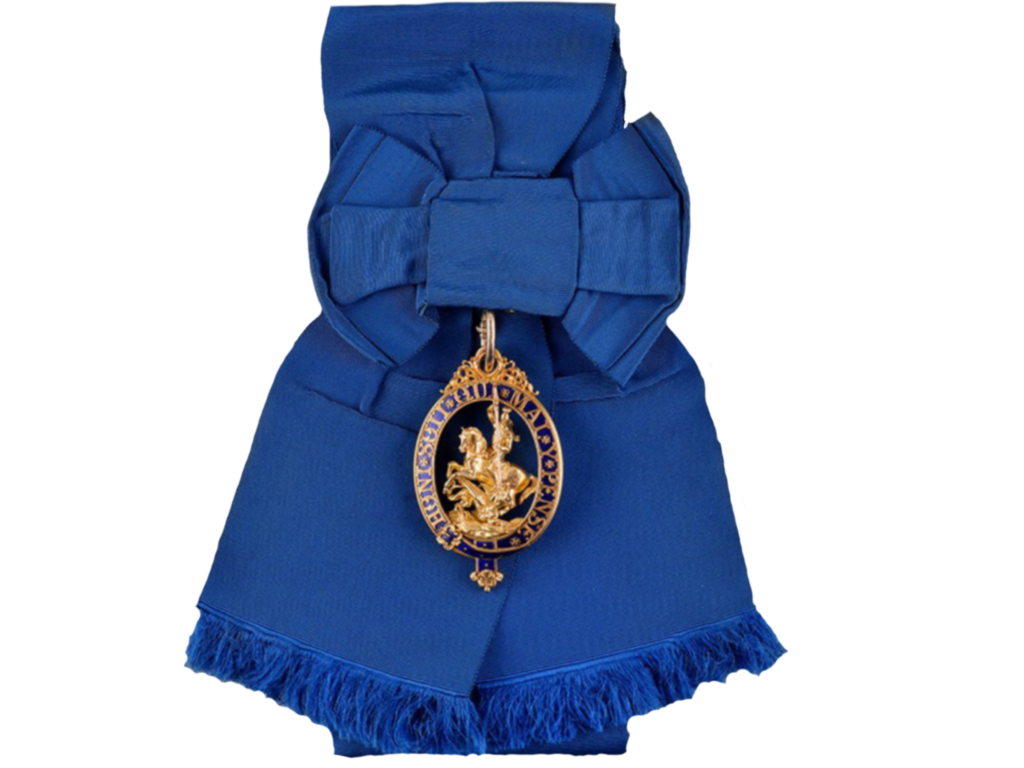
The Most Ancient and Most Noble Order of the Thistle
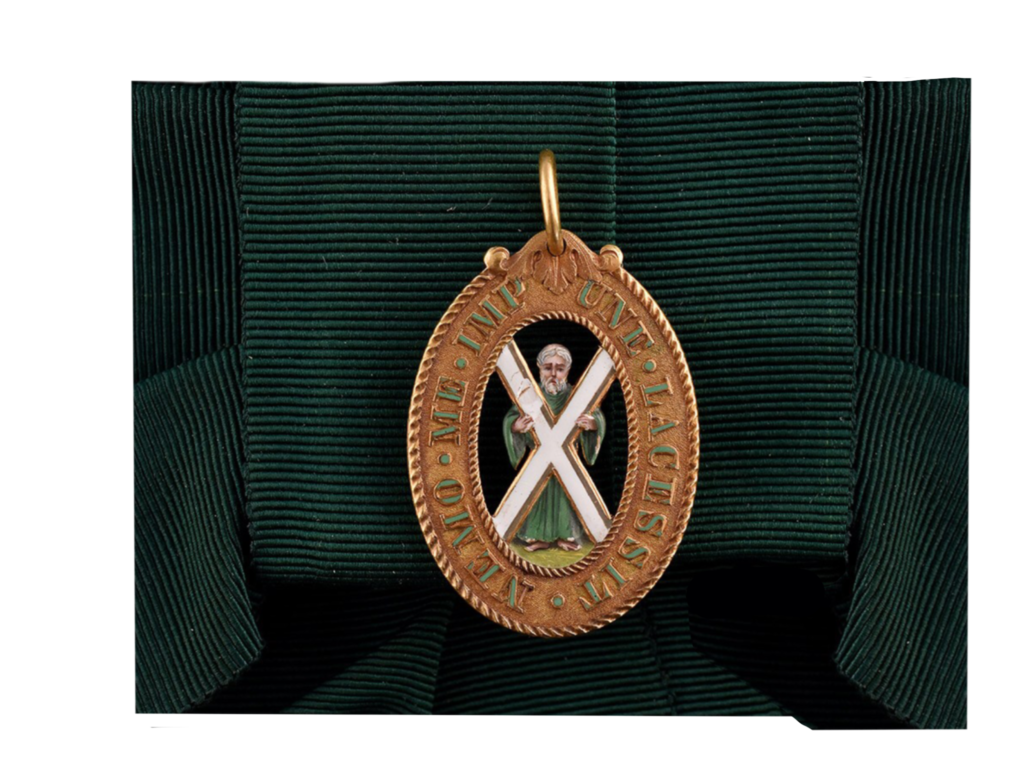
The Most Ancient and Most Noble Order of the Thistle is an order of chivalry associated with Scotland. The current version of the Order was founded in 1687 by King James VII of Scotland. The Order consists of the Sovereign and sixteen Knights and Ladies, as well as certain “extra” knights (members of the British Royal Family and foreign monarchs). The Sovereign alone grants membership of the Order; he or she is not advised by the Government, as occurs with most other Orders.
The order is awarded in the following ranks Knight of the Order of the Thistle (KT)/Lady of the Order of the Thistle (LT)
The Order of the Bath
The Order of the Bath is an order of chivalry and was founded in 1725 for service of the highest caliber. The order has a civil and military division and is awarded in the following ranks: Knight Grand Cross (GCB), Knight Commander (KCB) and Companion (CB).
The Order takes its name from the symbolic bathing which, in former times, was often part of the preparation of a candidate for knighthood.
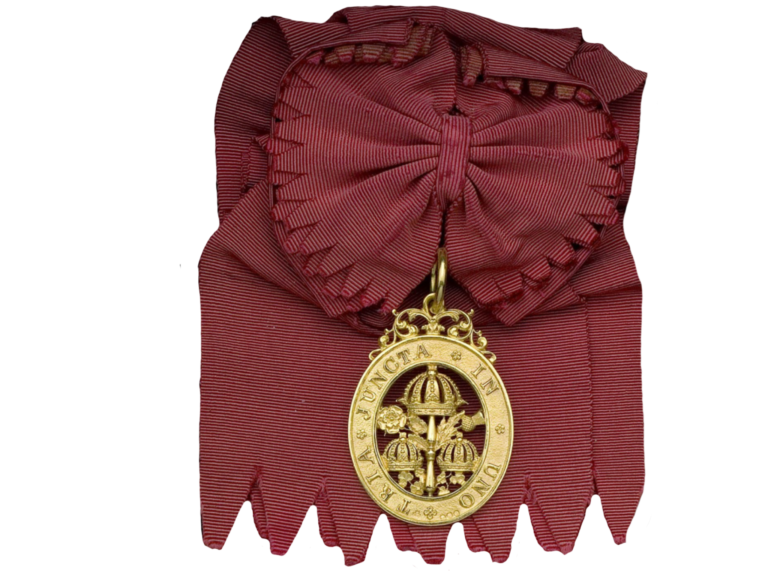
Order of St Michael and St George
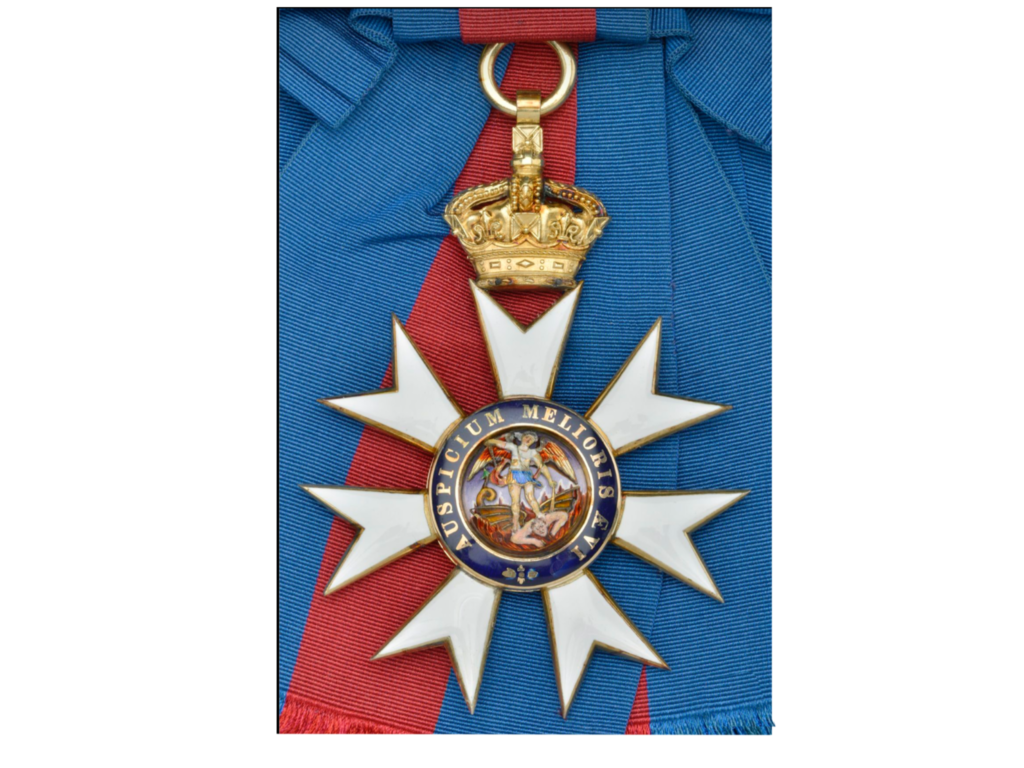
This Order was founded by King George III in 1818 and is awarded to British subjects who have rendered extraordinary and important services abroad or in the Commonwealth. Ranks in the Order are Knight or Dame Grand Cross (GCMG), Knight or Dame Commander (KCMG or DCMG) and Companion (CMG).
Royal Victorian Order
By 1896, prime ministers and governments had increased their influence over the distribution of awards and had gained almost total control of the system. Therefore, Queen Victoria instituted The Royal Victorian Order as a personal award for services performed on behalf of the Royal Family.
The ranks are Knight or Dame Grand Cross (GCVO), Knight or Dame Commander (KCVO or DCVO), Commander (CVO), Lieutenant (LVO) and Member (MVO).
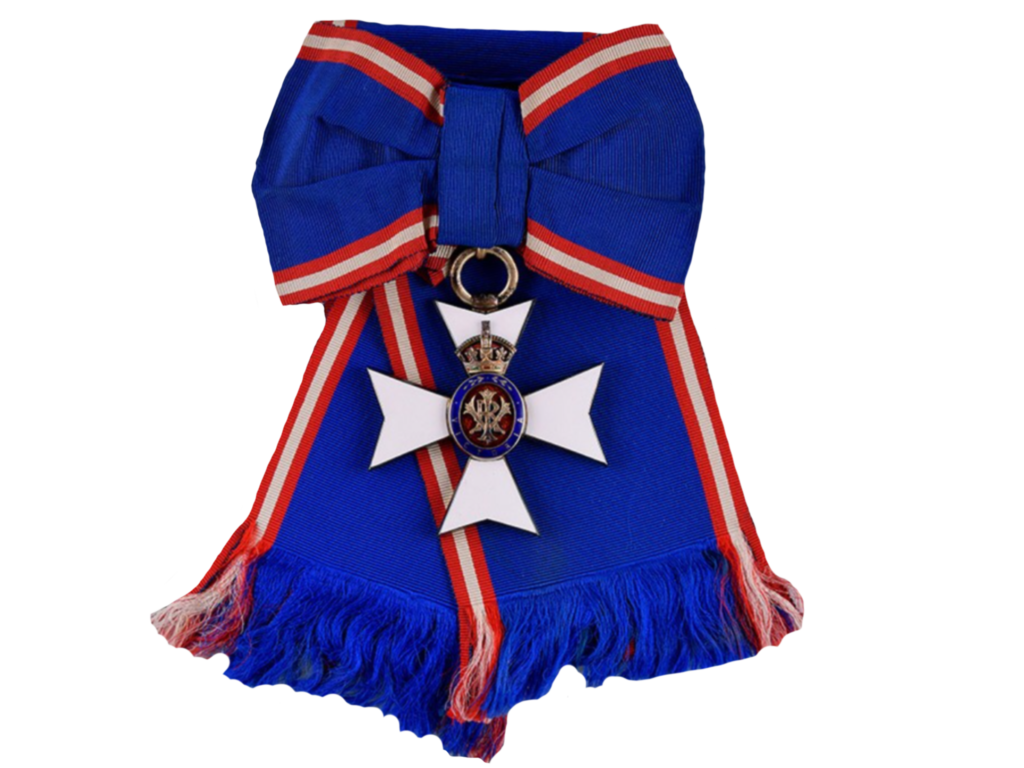
The Most Excellent Orders of the British Empire
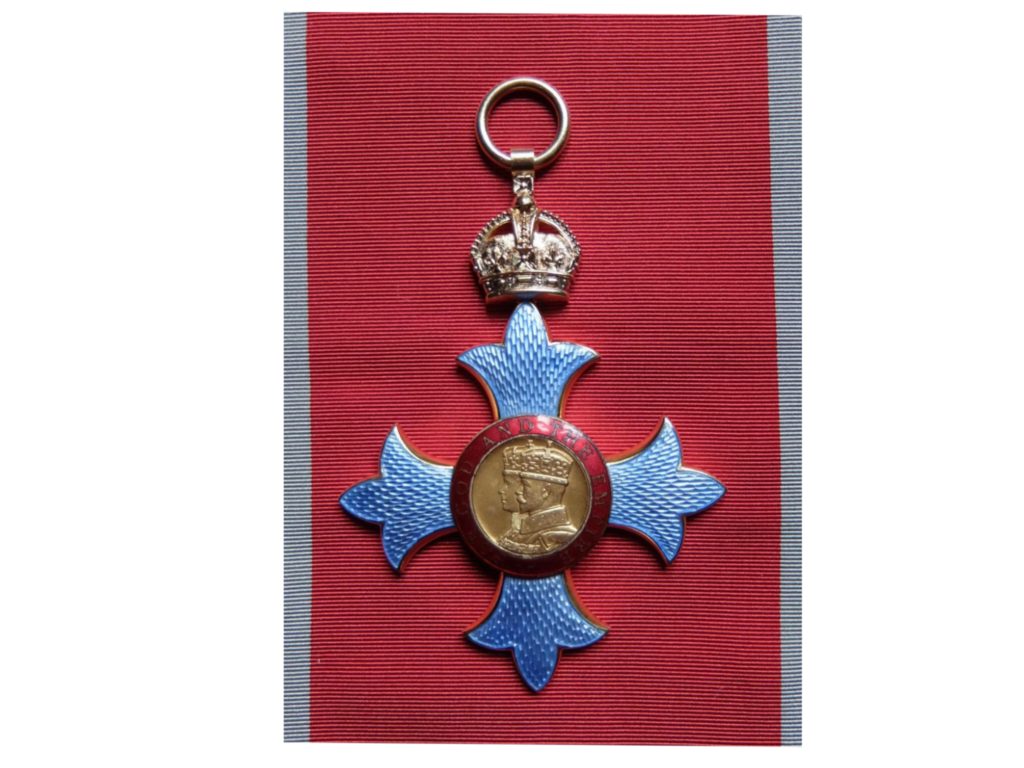
King George V created these honors during World War One to reward services to the war effort by civilians at home and service personnel in support positions.
The ranks are GBE – Knight Grand Cross or Dame Grand Cross of the Most Excellent Order of the British Empire (GBE); Knight Commander or Dame Commander of the Most Excellent Order of the British Empire KBE/DBE); Commander of the Most Excellent Order of the British Empire (CBE); Officer of the Most Excellent Order of the British Empire (OBE); Member of the Most Excellent Order of the British Empire (MBE).
They are now awarded for prominent national or regional roles and to those making distinguished or notable contributions in their own specific areas of activity.
Knight Bachelor
The title of Knight Bachelor is the basic rank granted to a man who has been knighted by the monarch but not inducted as a member of an orders of chivalry. Knights Bachelor are the most ancient of British knights, having emerged in the 13th-century during the reign of King Henry III. Knights Bachelor rank below knights of chivalric orders. A man who is knighted is formally addressed as “Sir” while his wife is addresses as “Lady”. The postnominal for a Knight Bachelor is Kt. It is interesting to note that there are no female Knight Bachelors, and only British nationals can be knighted as such. here is no female counterpart to Knight Bachelor. The lowest knightly honor that can be conferred upon a woman is Dame Commander of the Most Excellent Order of the British Empire (DBE), which is actually one rank higher than Knight Bachelor. Foreigners worthy of recognition are generally made honorary Knights of the British Empire.
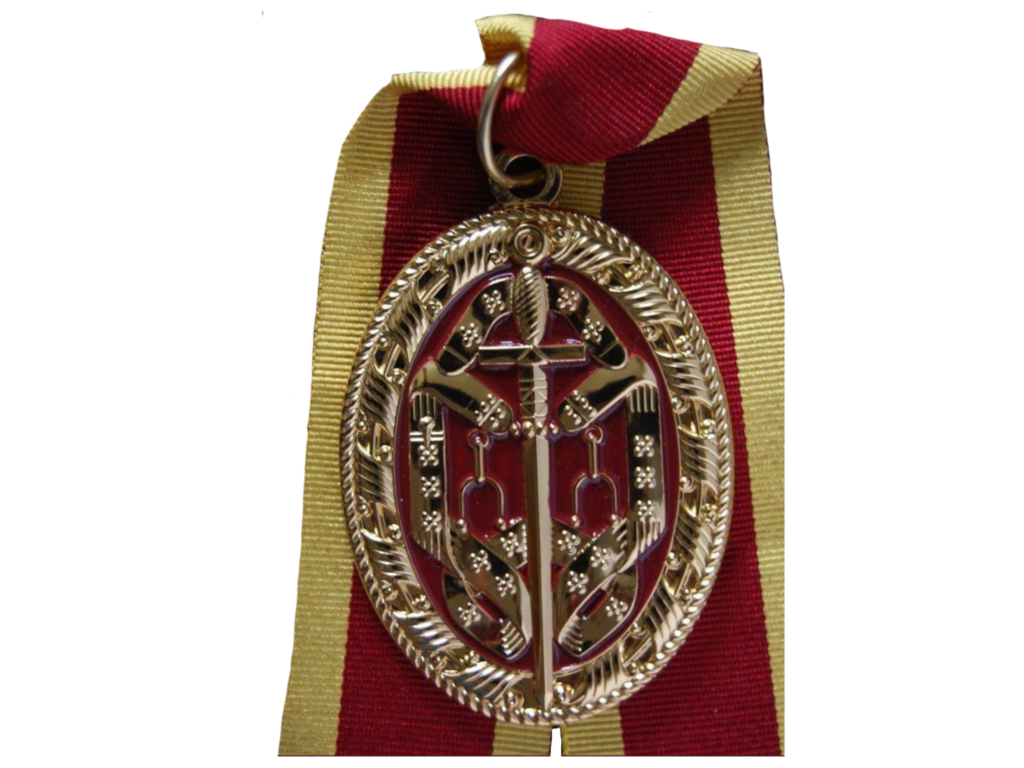
For over a century, US citizens have received honorary British knighthoods and damehoods. These individuals have distinguished themselves by contributions to Great Britain, the Commonwealth, or humanity in general. Honors are usually in recognition of outstanding contribution to global community and the benefit that the United Kingdom or the Commonwealth. According to the Trafford Council, people working in the awardees field will see their contribution as inspirational and significant, requiring commitment over a long period of time.
Made up of Great Britain and Northern Ireland, the United Kingdom is a historic country offering everything from modern cities to stunning countryside villages. England, Scotland, Wales and Northern Ireland offer shared as well as distinct cultural experiences that contribute to the overall makeup of the country. For information regarding visiting the UK visit the official travel site of the UK at https://www.visitbritain.com/us/en
The Honours system of the United Kingdom is arguable the best known in the world. Many honors, national as well as non-ruling, are based on the orders mentioned here. For more information on the Honours system of the United Kingdom, visit the website for the UK Honours office at: https://www.gov.uk/honours
